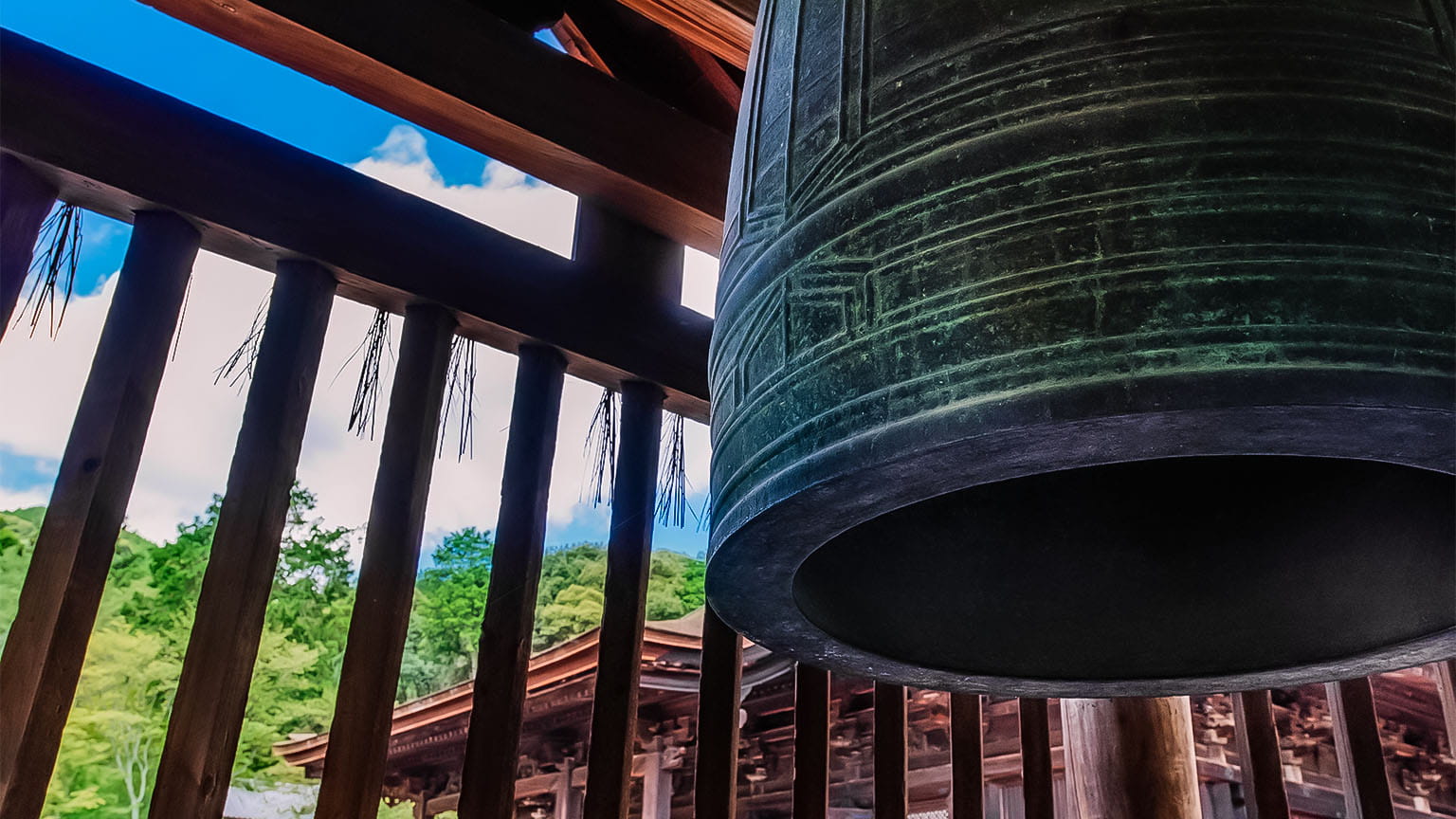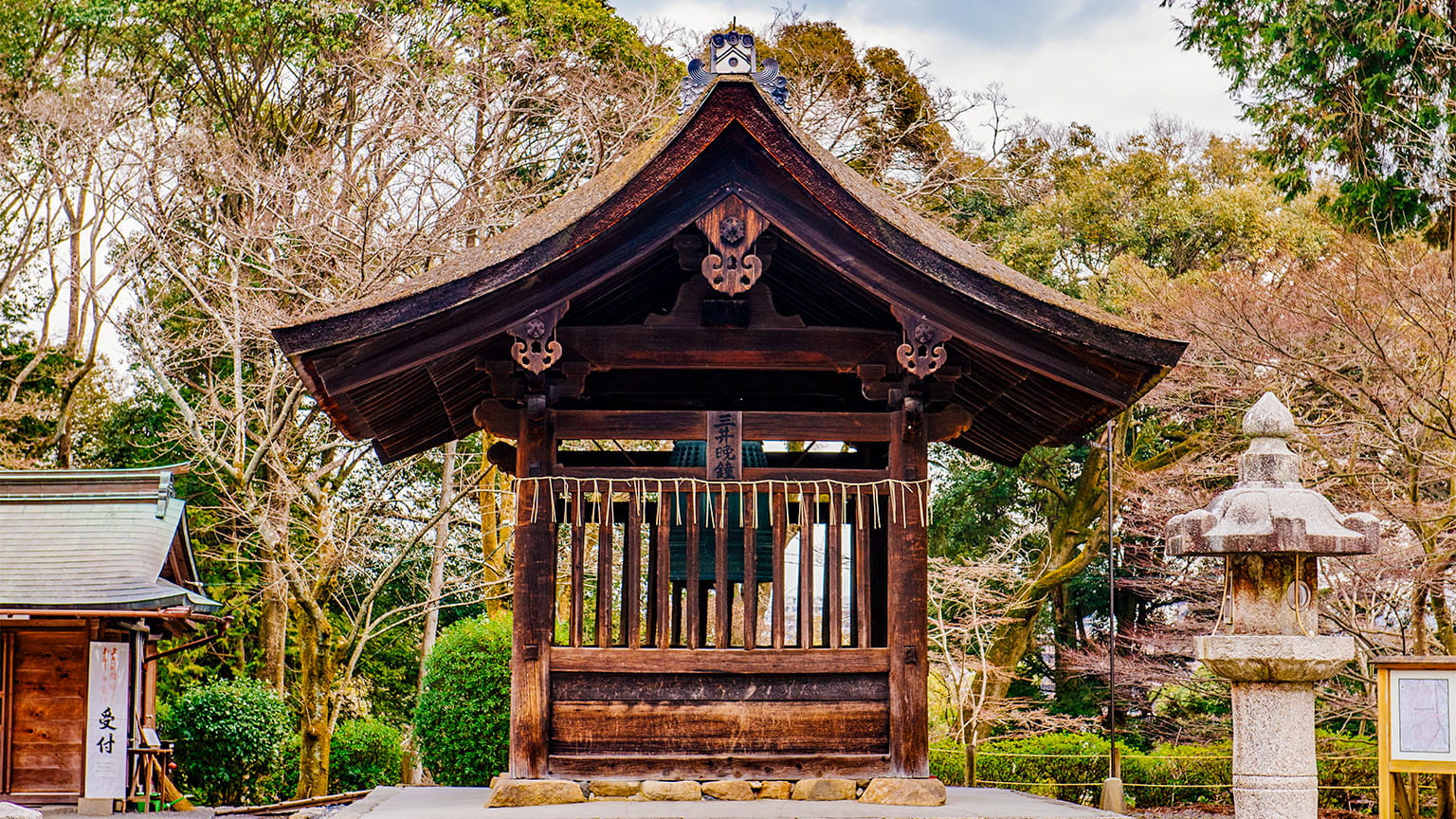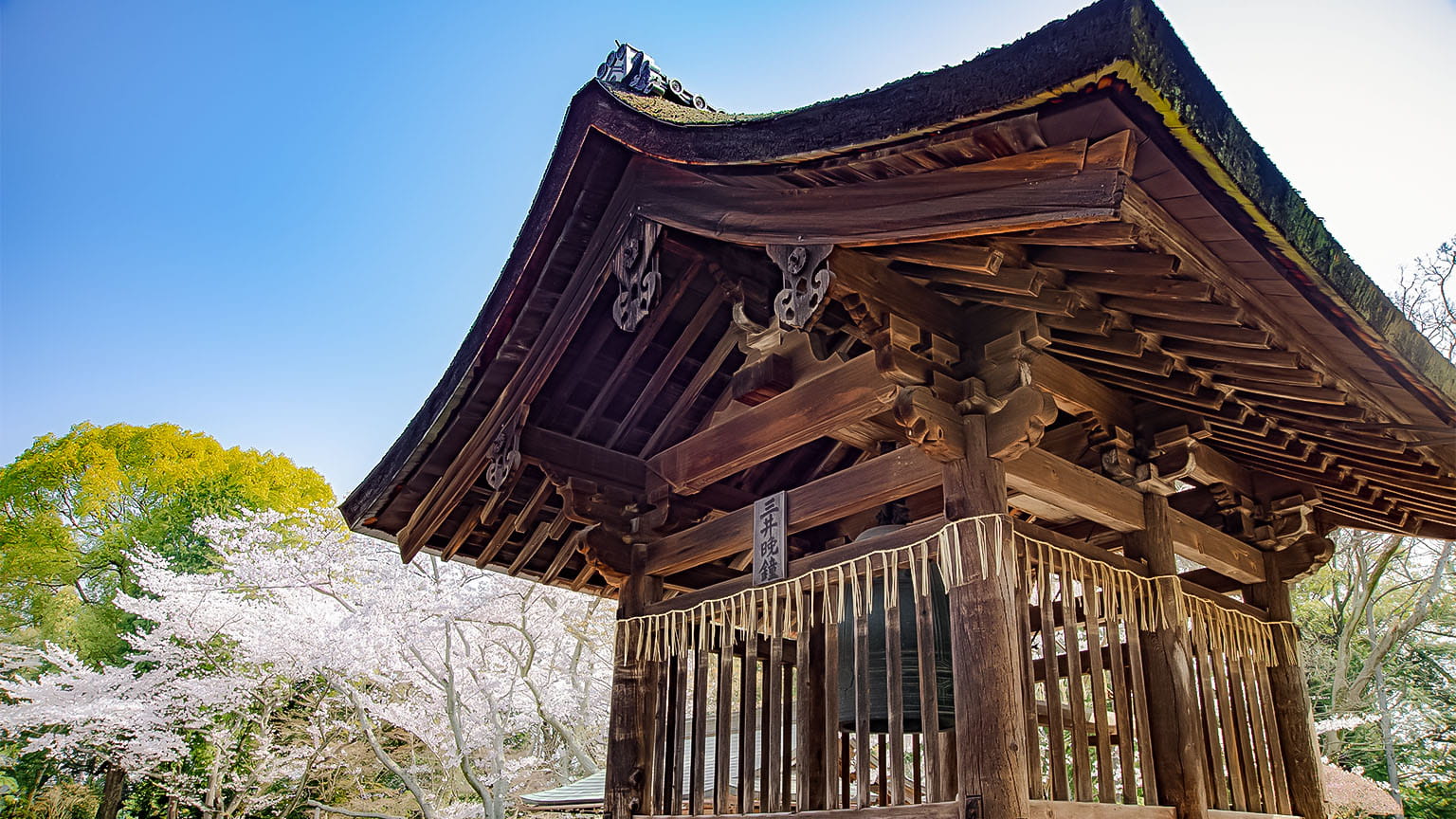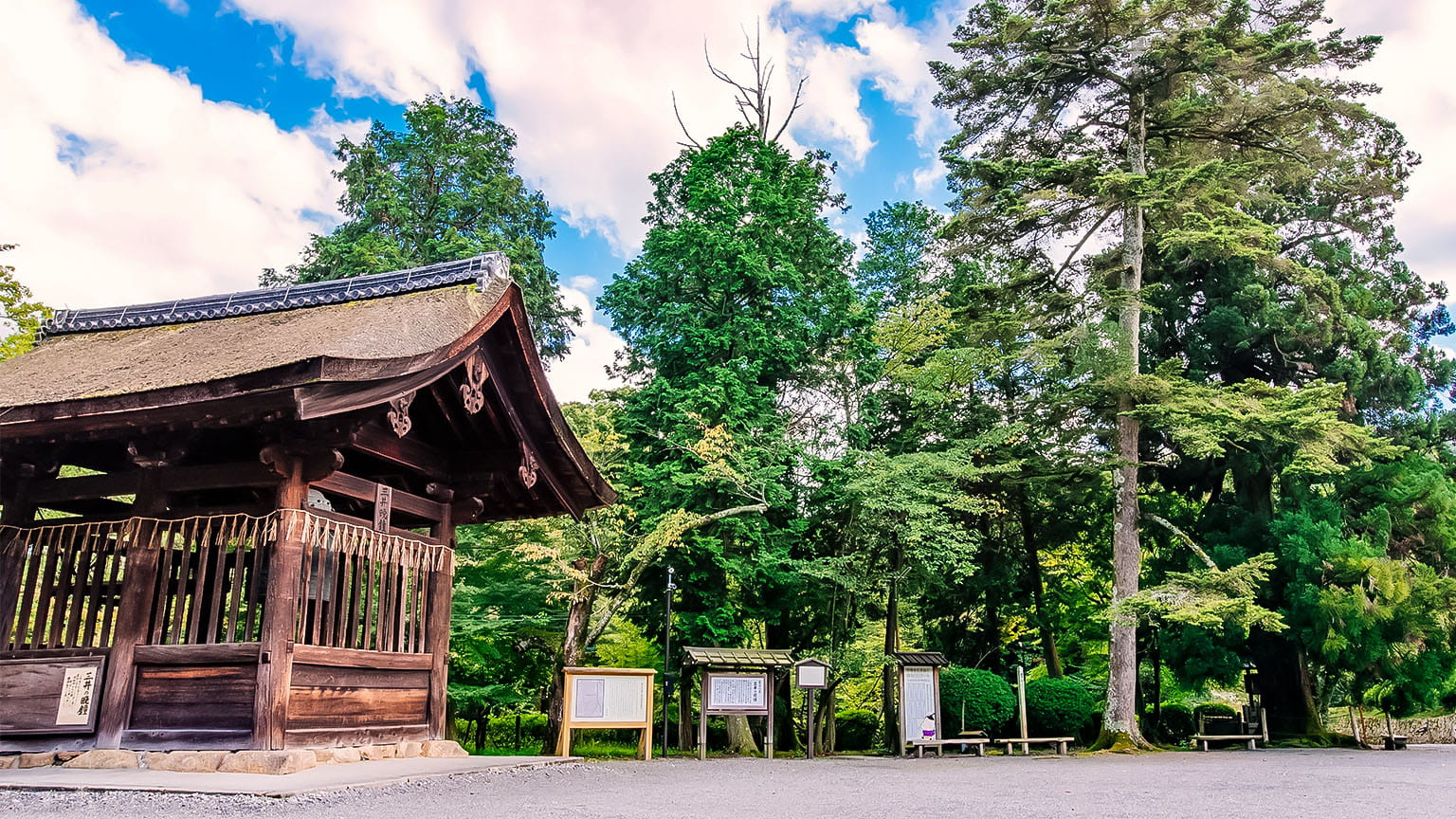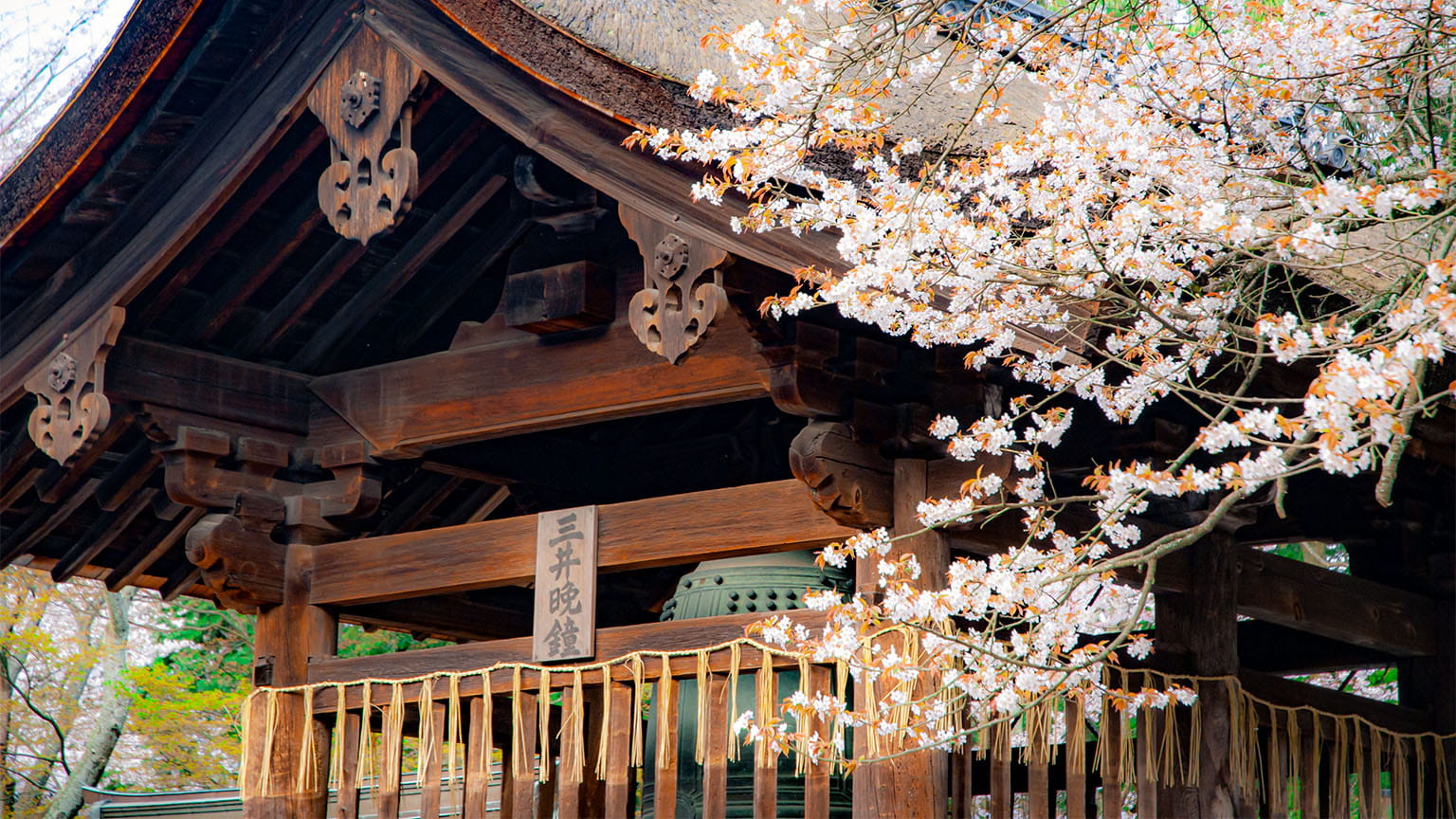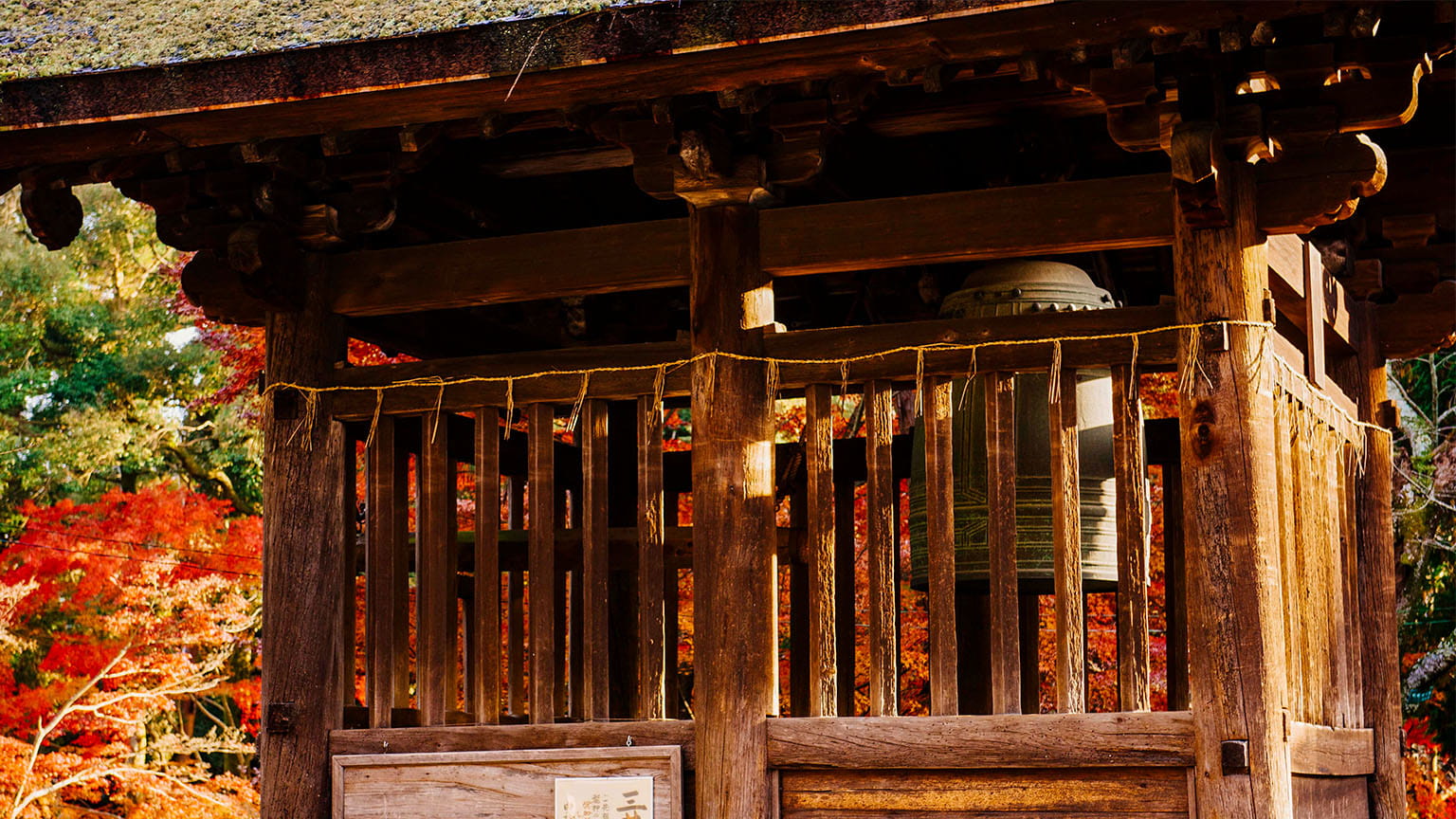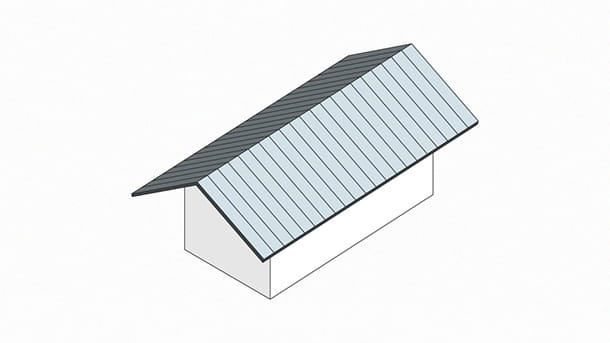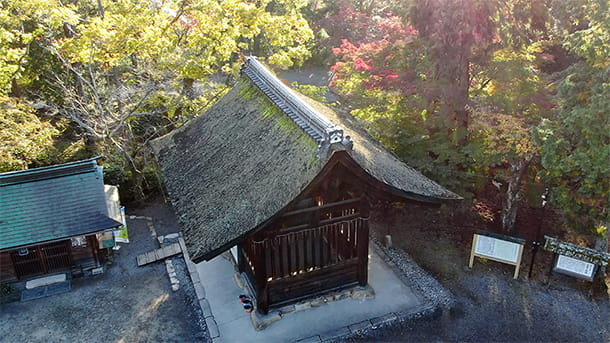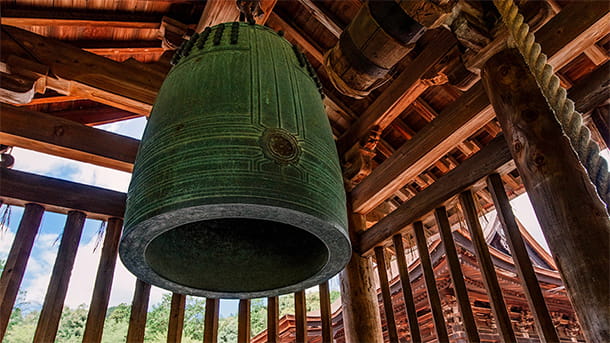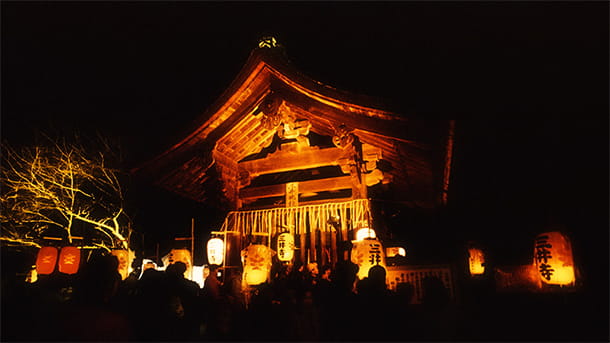Cultural Property of Japan
Bell Tower
READER
This building was constructed in 1602 by Docho, the chief administrator of Miidera Temple and an honorary member of the Imperial family (jusangu). It differs from a common bell tower in that it has a kirizuma gabled roof, six pillars, and cypress bark roofing, with plank walls on the bottom and latticework on the top of every side of the building.
A large temple bell, known as the “Mii Evening Bell,” one of the Eight (notable) Views of Omi Province (present-day Shiga Prefecture), hangs from the ceiling of the tower. It is forged in an older style and resembles the “Benkei Hikizuri bell,” which Musashibo Benkei is said to have dragged from Miidera all the way up to Mt. Hiei. Its beautiful sound has solidified its status as one of the three most famous bells in Japan. Many pilgrims visit the temple on New Year’s Eve to hear the bell ring in the night while praying for good fortune in the coming year.
- −
- Momoyama Period
(7th year of Keichō Era, 1602)
Please rate this cultural heritage introduction page.
-
-
Satisfaction
-
-
Understanding
-
-
Recommendation
-
-
Attractiveness
-



